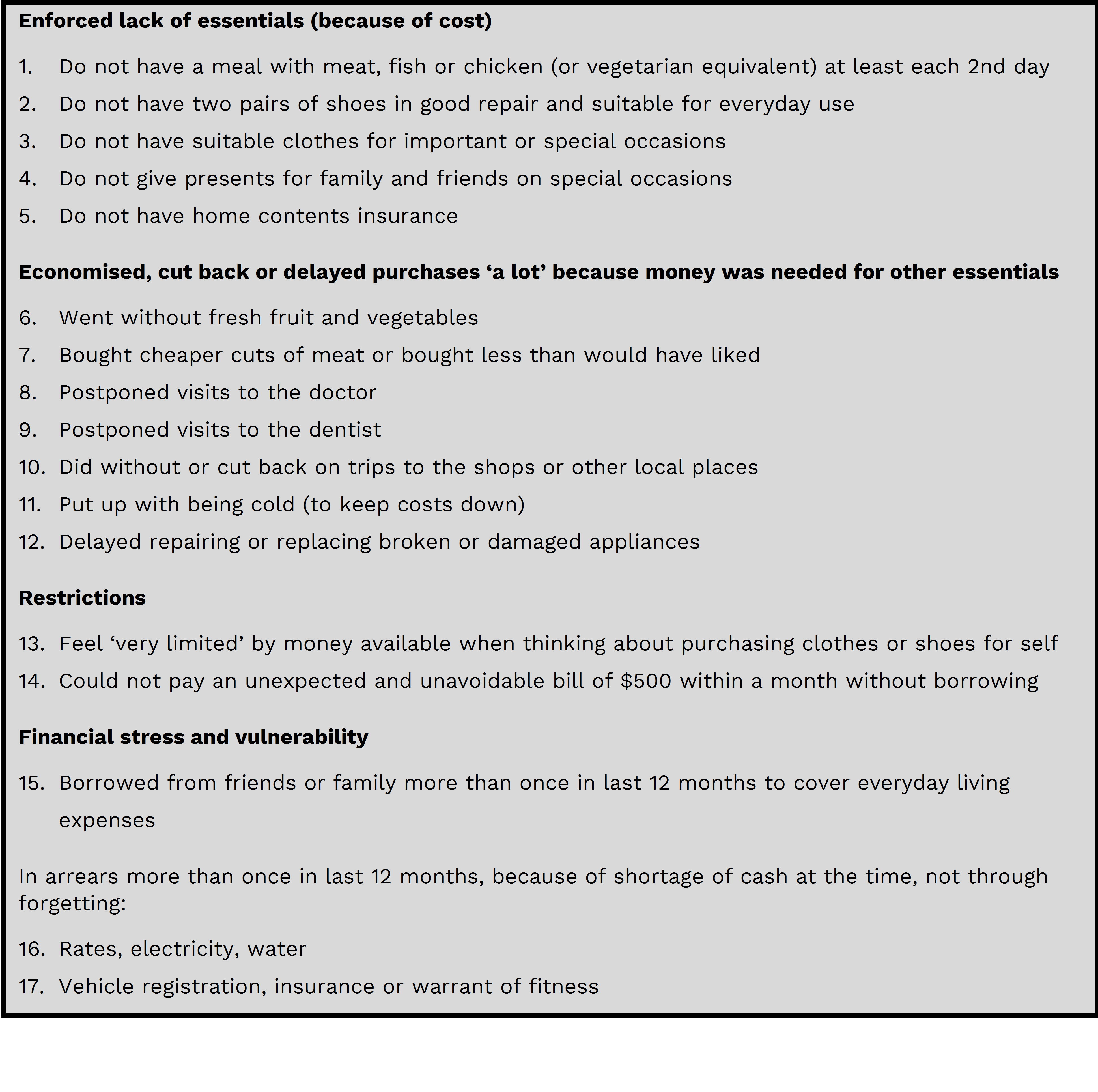Children experiencing material hardship
The Child Poverty Monitor 2020 report from the New Zealand Child and Youth Epidemiology Service at Otago University makes for sombre reading. It reinforces a stark reality that for many families in Aotearoa we are far from our ideal of being a great place to bring up children. Arguably, we are not even close to being a good place for many.
As economists and analysts it is in our nature to get tangled up in the technical detail of whether poverty should use relative or absolute measures of income. In addition, there are adjustments to be made for family size, through a process to calculate equivalised household incomes. There are further arguments as to whether such incomes should be measured before or after housing costs are deducted.
Yes, sophisticated detailed analysis is needed to counter the poverty challenge we face. Arguably, however, this level of detail risks losing the audience. Also, putting poverty in an income versus spending framework risks losing the narrative of the ‘real people’ that should be at the centre of this challenge.
Material hardship indicators, rather than incomes, are at times more useful when conveying messages around poverty. Material hardship measures whether a family is able to access (and enjoy) items most of us would consider essential for living in twenty-first century Aotearoa. These items include, for example, visits to the doctor and dentist, meals with meat (or vegetarian equivalent), fresh fruit and vegetables, or not having to be cold.

The full list (as tabulated) contains 17 items indicating components of material hardship. As per official Statistics New Zealand definitions, a family is considered to be in material hardship if they respond ‘yes’ to six or more of the 17 items in this list. In official terms, material hardship is unacceptably low material wellbeing. If a family respond ‘yes’ to nine or more items the family would be considered to be in severe material hardship.
It is sobering to note that the latest Monitor reports 150,000 children living in households experiencing material hardship. These are children living in households without two pairs of shoes, or fresh fruit and vegetables, or clothes for special occasions. Even more sobering are the 66,000 of these children who are experiencing severe material hardship. These numbers provide convincing evidence (beyond the at times cold income calculations) that child poverty is indeed very real for many in New Zealand.
The Child Poverty Reduction Act 2018 has a target to reduce to six percent (by 2028) the proportion of children living in households experiencing material hardship. The 150,000 figure reported by the Child Poverty Monitor represents over 13 percent of all children.
Translating percentages to families, children, and the items they are going without indicates we have a long way to go before we can claim Aotearoa to be a great place to bring up children.